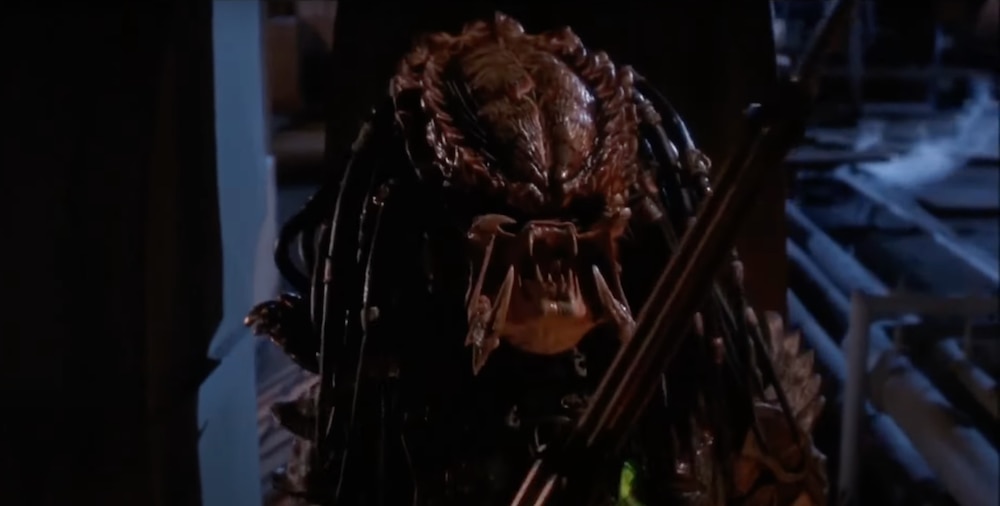Create a free profile to get unlimited access to exclusive videos, sweepstakes, and more!
Can you really turn invisible? The science behind the Predator's cloaking device
Now you see me, now you still see me but a little less.

The Predator franchise has spawned five movies — including the upcoming prequel film, Prey — and two crossover flicks pitting the titular predator against alien xenomorphs, not to mention countless books, comics, video games, and more. But, long before the Predator fought the Ninja Turtles in the pages of comic books, however, one was hunting Arnold Schwarzenegger and Carl Weathers down in 1987. During a rescue mission, Dutch (Schwarzenegger) and his crew encounter an unknown entity in the jungle, hunting them from the trees and remaining out of sight through the benefit of an advanced cloaking mechanism.
Cloaking, or the ability to render oneself or one’s craft invisible, is a staple of science fiction stories from Star Trek to Doctor Who and our fictional imaginings have inspired no small number of attempts to bring the technology into reality. Despite its seemingly magical effect, could cloaking actually work? And, if so, how close are we to pulling it off?
HOW CLOAKING COULD WORK
Any technology which sufficiently renders a user invisible might be considered a cloaking device and there are a couple of potential ways to achieve the desired effect. In principle, all you’re really doing is allowing a viewer to see what’s behind an object instead of the object itself.
The way the Yautja — the Predator species — achieve cloaking is through advanced technology which bends light around the wearer. A viewer can’t see the wearer because light isn’t reacting with the surface of their body. Instead, every photon reaching your retina is coming from behind and around your alien adversary.
There is, in principle, nothing preventing this sort of technology from being made. Anyone who has ever dropped a straw in a glass of water knows that light can be bent by making it travel through various substrates. The trick is getting it to bend in just the right way so that the light reaching the eyes of anyone watching comes from directly behind you.
If the light gets bent incorrectly, you might end up with a shifted image, not unlike the broken straw you see sitting in your glass of water. Any alien hunter wearing such a cloaking device would still technically be invisible, but you’d be able to pretty easily find them. A Predator-shaped shifted image would stick out like a Magic Eye image in the jungle.
That is, in fact, why Predators prefer jungle terrain. The already fragmented nature of the surroundings helps to hide the imperfections in the device. Some cloaking technology, it turns out, works better in certain environments. It’s also worth noting that any cloaking device will be dependent on the sorts of light your prey can see. While a Predator’s cloaking device is good at obscuring light in the visible spectrum, they might be glaringly obvious to an entity who can see in the infrared, particularly if the device itself gives off heat.
MAKING A CLOAKING DEVICE
There are a couple of ways we might one day build a cloaking device of our own. In fact, scientists and engineers are hard at work trying to make it happen. Previous attempts at cracking invisibility have taken the same strategy as the Yautja, bending light around an object. Often, however, the resulting image is warped or else gets muddled when either the cloaked object or the viewer moves.
Scientists at the University of Rochester built a simplified cloaking device using a series of four lenses which successfully bend light around an object. The effect is pretty impressive as long as you’re standing in the right place. If you’re looking down the chute of lenses, you’ll see right through any object placed at a particular point along the light path and to the background beyond.
It has an effect of around 15 degrees, meaning that the object continues to be cloaked even if the viewer moves slightly. That doesn’t mean there aren’t limitations. The size of the objects which can be cloaked are limited by the size of the lenses, meaning that in order to cloak a person, you’d have to have a series of person-sized lenses. Any cloaking system would also be much larger than the person themselves because of the need for several lenses all lined up, making it more than a little difficult to stealthily move through the jungle. It’s effective, but it's not really practical.
For our purposes, we need something that’s essentially the size of a person, a piece of technology that’s form fitting on the body. Instead of actually bending light, one way we could achieve effective invisibility is by picking up the light we want and manually moving it using cameras and displays.
Imagine a body suit you could wear, but instead of being made of polyester it’s comprised of thousands of small cameras and screens. It could pick up the background from all around you and display the corresponding image on the opposite side of your body. That’s how it was done in the 2020 remake of The Invisible Man.
Back at the University of Rochester, engineers are working on just that. Their digital cloak takes recorded images from the background and calculates the angle of the viewer to display the appropriate image from around a cloaked object.
Unfortunately, each of these methods has pretty significant limitations which prevent them from having the sorts of perfect cloaking we look for in our science fiction. They tend to work only in tightly controlled conditions which would fall apart the moment you start running through the jungle. That said, these sorts of digital cloaks would likely work pretty well in the emptiness of space where the background you’d have to display is fairly uniform and low in detail. Counterintuitively, we might crack the code of cloaked spaceships before we figure out how to hide ourselves.
The upshot is surviving a Predator attack might be a little easier than our movies have suggested. They might be able to get to Earth without our noticing, but once they’re on the surface all bets are off.



























